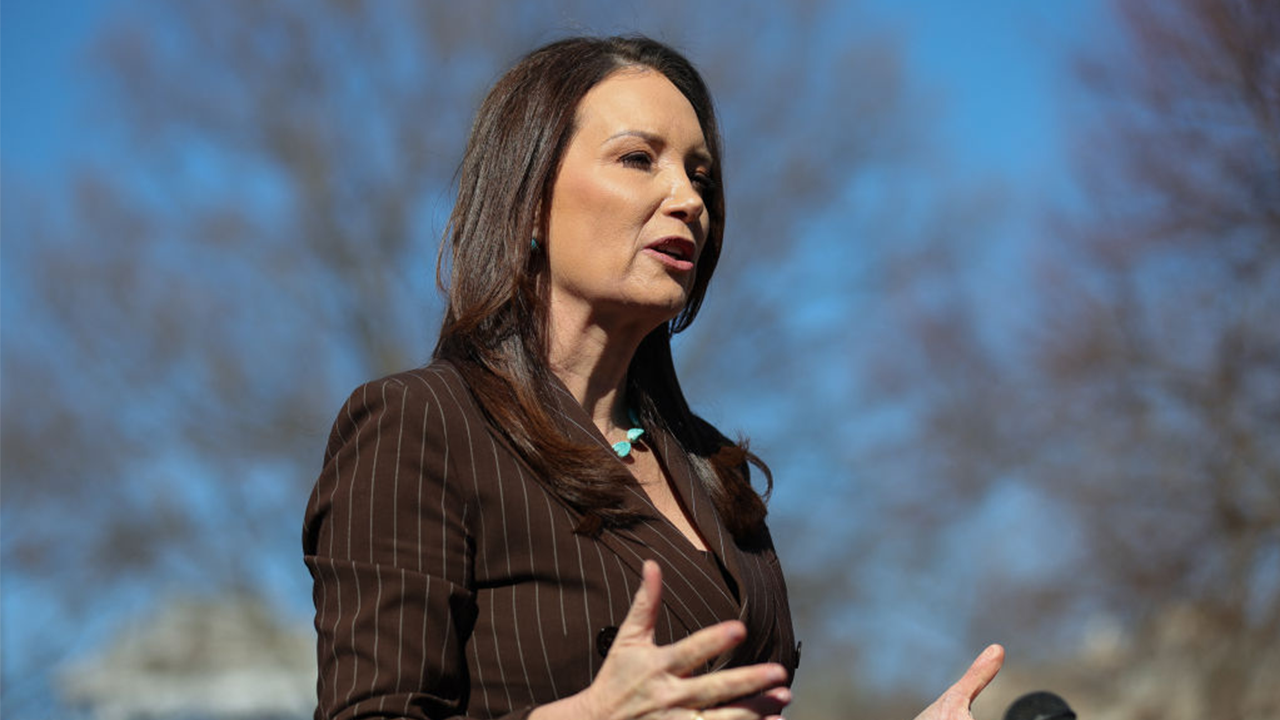Fitness
5 exercises to boost fat loss and muscle gain at the same time

Are you looking to shed those stubborn kilos and sculpt a lean, muscular physique without stepping foot in a crowded gym? Look no further! We understand that finding time to hit the gym can be a challenge, but that doesn’t mean you have to sacrifice your fitness goals. By incorporating specific exercises into your fitness regimen, you can optimize your home workouts to promote fat loss while gaining muscle. We are revealing a few highly effective exercises that can help you achieve this dual objective!
Exercises for fat loss and gain muscle
Achieving a toned physique often requires a combination of losing excess body fat and building lean muscle mass. While these goals may seem contradictory, it is indeed possible to pursue both simultaneously through a strategic exercise routine.
Health Shots got in touch with fitness expert Mukul Nagpaul, Pmftraining, and Fit India Movement Ambassador, to know which exercises target fat loss and muscle gain. Nagpaul says, “The key to a successful fitness journey lies in the balance between burning calories and building muscle. But many questions whether you can burn calories and gain muscle together or not. Well, it is possible. There are a few exercises that have been proven to have benefits for both muscle growth and fat loss.”
Here are 5 effective exercises for fat loss and muscle gain simultaneously:
1. Squats
Squats are a compound exercise that engages multiple muscle groups, including your glutes, quads, hamstrings, and core. They are highly effective for burning calories and stimulating muscle growth.
To perform a squat, stand with your feet shoulder-width apart, lower your body by bending your knees, and push your hips back as if you’re sitting in a chair. Keep your chest up and your back straight. As you rise back up, engage your glutes and push through your heels. Aim for three sets of 10-12 repetitions.
2. Push-Ups
Push-ups are a classic upper-body exercise that targets your chest, shoulders, triceps, and core muscles. They are an excellent choice for building upper body strength and promoting fat loss.
To do a push-up, start in a high plank position with your hands slightly wider than shoulder-width apart. Lower your body by bending your elbows, keeping them close to your sides. Push back up to the starting position, engaging your chest and triceps. If regular push-ups are too challenging, you can modify them by performing them on your knees. Aim for three sets of 8-12 repetitions. For beginners, try knee push-ups or wall push-ups.
3. Deadlifts
Deadlifts are a powerful exercise that primarily targets your posterior chain muscles, including your hamstrings, glutes, and lower back (exercises for back pain). They are highly effective for building overall strength and burning calories.

To perform a deadlift, stand with your feet shoulder-width apart, grip a barbell or dumbbell with an overhand grip, and lower the weight by hinging at your hips, keeping your back straight and knees slightly bent. Engage your hamstrings and glutes to lift the weight back up, focusing on maintaining proper form throughout the movement. Aim for three sets of 8-10 repetitions.
4. Overhead Press
The overhead press is an excellent exercise for developing your shoulder muscles, triceps, and core stability. It also engages various stabilizer muscles throughout your body, making it a great choice for burning fat and building muscle simultaneously.
To perform an overhead press, start with the weights at shoulder height, palms facing forward. Push the weights overhead, extending your arms fully, and then lower them back down to the starting position. Aim for three sets of 8-10 repetitions.
5. Pull-Ups
Pull-ups are a challenging yet highly effective exercise for targeting your back, biceps, and forearms. They require minimal equipment and can be done using a pull-up bar or even a sturdy door frame.

To perform a pull-up, grip the bar with your palms facing away from you, hands slightly wider than shoulder-width apart. Engage your back muscles and pull your body up until your chin is above the bar, then lower yourself back down with control. If you’re unable to do a full pull-up, you can start with assisted pull-ups using resistance bands or by using a chair for support. Aim for three sets of 6-10 repetitions. Beginners can start with assisted pull-ups or lat pulldowns.
The last word
Remember that consistency is key when it comes to achieving fat loss and muscle gain. Pair these exercises with a balanced diet, adequate rest, and other forms of cardiovascular exercise to maximize your results. Always listen to your body and consult a healthcare professional before starting any new exercise program. Stay motivated, be patient, and say hello to a fitter, stronger you!

Fitness
Early or late? The best time of the day to exercise

We all know that exercise is good for us. But research is increasingly reporting that it can be more beneficial at specific times of the day — from morning workouts helping you to burn fat to evening exercises that help to lower blood pressure.
The University of Regensburg in Germany found recently that being more active in the mornings and evenings could reduce your risk of bowel cancer by 11 per cent. The researchers looked at data from more than 86,000 adults and identified four types of exercisers: those who were more active in the morning; those in the evening; midday movers; and those who were continually active all day.
The study found that those whose exercise levels peaked at either 8am or 6pm had
Fitness
The Ozempic workout? How gyms and trainers are catering to a new group of exercisers

It’s 10 a.m. on a Friday at SURFCORE Fitness, a boutique gym in Mid-City, and a 52-year-old woman is following an exercise circuit as her trainer watches on. The fashion consultant, who is squeezing in a session before work, lifts relatively light weights while doing simple movements to build strength: goblet squats with a 6-pound kettlebell, then bicep curls with a 10-pound weight.
You’d never guess it, but this is the latest exercise craze in action: Call it the Ozempic workout.
GLP-1 drugs such as Wegovy, Ozempic, Zepbound and Mounjaro have helped millions of people combat Type 2 diabetes and cardiovascular disease as well as shed weight. The class of drugs — GLP-1 receptor agonists — has been around for two decades as a diabetes medication. Their popularity as a tool for weight loss skyrocketed after the FDA approved Wegovy for weight management in 2021.
But these drugs have also created new challenges. The weight loss they spur often comes with a reduction in lean body mass that includes muscle, making people physically weaker. Because GLP-1 drugs send signals to the brain telling people to feel full on fewer calories, those taking them are often operating in a caloric deficit. That reduced appetite, if not overseen properly by a doctor, could cause nutritional deficiencies and leave people with less energy for workouts, says Dr. Martha Gulati, director of preventive cardiology at Cedars-Sinai Medical Center. It’s then harder to exercise at the intensity needed to gain back the muscle they’ve been losing.
“Depending on the drug, people can lose between 25%-50% of their lean body mass,” Gulati says.
Which is where the GLP-1 workout comes in. The routine’s aim is to help patients build and preserve muscle mass by prioritizing strength training over cardio. It often incorporates education around nutrition and postworkout recovery techniques, helping participants develop new, healthy lifestyle habits to prevent weight gain once they go off the GLP-1 drugs. Over the last year, the hashtags #ozempicworkout and #glp1training have populated TikTok and Instagram, and the GLP-1 workout has been promoted at gyms, on blogs and on the YouTube accounts of personal trainers .
Trainer Mike Kimani guides his client, Jessica Bunge, in a GLP-1 workout at LM Fitness Center in Atwater.
(Juliana Yamada/Los Angeles Times)
“If fitness professionals don’t tailor their approach to individuals on these medications, then there are risks for [them] losing functional strength, bone density, metabolic health.”
— Josh Leve, CEO of the Fitness Business Association
Luxury fitness chain Equinox introduced a “GLP-1 protocol” in January 2024 and has since rolled it out at 80 clubs internationally. Planet Fitness posts GLP-1 workout guidelines on its blog. Independent gyms in Los Angeles, such as SURFCORE Fitness, are promoting GLP-1 workouts on Instagram, “to stay ahead of the curve,” says owner Carlos Sosa. Personal trainers are getting in on the trend as well. Exercise influencer and trainer Chris Ryan debuted a GLP-1 workout series on his fitness app this month that includes live and on-demand routines.
“If fitness professionals don’t tailor their approach to individuals on these medications, then there are risks for [them] losing functional strength, bone density, metabolic health,” says Josh Leve, CEO of the Minneapolis-based Fitness Business Assn. “So we’re seeing a pretty rapid response from the industry to offset these dangers.”
The beginner’s strength-training regime isn’t new. Rather, it’s been repackaged for a new fitness audience.
“It’s just marketing,” says Shawn M. Arent, professor and chair of the department of exercise science at the University of South Carolina. “We might have to take into account a lack of energy [on the part of GLP-1 exercisers]. But in terms of our general guidelines for resistance training, there really is nothing special about a GLP-1 workout. At the end of the day, it’s just resistance training. But that’s not sexy.”

Jessica Bunge uses the squat rack during a GLP-1 workout at LM Fitness Center.
(Juliana Yamada/Los Angeles Times)
Regardless, the routine appears to be here to stay. About 6% of adults in the U.S. say they are taking GLP-1 drugs for weight loss, according to a 2024 poll conducted by the San Francisco-based health policy nonprofit KFF. That’s more than 15 million people. With these branded workouts, fitness facilities and trainers are courting a new class of consumers.
The trend has had a ripple effect on organizations that administer certification programs for fitness trainers. The National Academy of Sports Medicine and the American Council on Exercise are now offering GLP-1 education. The National Exercise & Sports Trainers Assn. debuted a “GLP-1 Exercise Specialist Certificate” in January that it touts as a “passport to success” for trainers.
Regardless of whether these GLP-1 workouts are innovative, promoting these exercises helps to build community among those who are using the drugs, says Eric Durak, a Santa Barbara-based exercise physiologist who authored NESTA’s GLP-1 certificate program.
“It’s about changing the mind-set and lifestyle of overweight people, many of whom have never exercised before,” Durak says. “Some may be people who didn’t feel accepted by society because they weighed more than 300 pounds. We want to get them in the door, then create a space for them that they feel is more a community than a training center. The trainer’s job goes above sets and reps with this population. It’s also about developing relationships.”
“It’s about changing the mind-set and lifestyle of overweight people, many of whom have never exercised before.”
— Eric Durak, exercise physiologist
Gyms and trainers are approaching the GLP-1 workout with different priorities in mind. Some focus on educating clients about nutrition, advising they eat more protein and monitor macronutrients. Others emphasize postworkout recovery strategies, like guided stretching, sleep optimization and tracking tools to monitor muscle-mass retention.

Mike Kimani stretches out client Jessica Bunge after her GLP-1 workout at LM Fitness Center.
(Juliana Yamada/Los Angeles Times)
Equinox’s GLP-1 protocol is considered a framework for people taking the drugs, one that addresses workout intensity, frequency and volume (how many reps) as well as robust habit coaching, says the club’s senior personal training manager, Stan Ward.
“When they’re getting these workouts in, we’re also talking about their lifestyle,” Ward says. “Whole food sources, portion sizes. We help them navigate food and understand when they feel full. And how to do that in a long-term, sustainable fashion.”
At SURFCORE Fitness, Sosa is in touch directly with clients’ doctors, he says.
“Doctors are sending people here: ‘I’m not gonna give you the [GLP-1] drug unless you workout,’ they tell them. So I talk with their doctor about what their needs are, the specific drugs they’re on and the dosage, any side effects, plus any other health concerns,” Sosa says. “I reassure them my workouts will address their needs.”
One of Sosa’s clients, the 52-year-old fashion consultant, went on Mounjaro last March and has since lost 40 pounds — but she saw muscle on her triceps and legs dwindle. The GLP-1 workout has helped her body composition, Sosa says, and his being in touch with her doctor has given her confidence.
“She feels comfortable to be working out with me, specifically, because I know what her needs are, medically,” he says.

Jessica Bunge does dumbbell squats during her GLP-1 workout.
(Juliana Yamada/Los Angeles Times)
The GLP-1 training regime at LA Athletic Club, downtown, is particularly focused on the side effects of the medications — and then tailoring workouts to mitigate them. It partnered with the San Diego County-based CHEK Institute, to hold workshops for trainers. They’re now careful not to overexert clients or to quickly switch up exercises from sitting to standing positions because high doses of GLP-1 drugs can cause dizziness. Longer and more intense workouts may cause increased gastrointestinal issues, like nausea and stomach discomfort, so trainers focus on consistent, moderately intense workouts.
“The last thing we want to do is push them too hard,” says LAAC Director Ed Gemdjian. “We want to work them to their comfort level, and then continue that consistency.”
“I no longer feel, ‘Oh, my gosh, is everyone looking at my body?’ I feel more confident [at the gym] now.”
— Jessica Bunge, who lost 30 pounds on Ozempic
Mike Kimani, an independent trainer who works out of LM Fitness Center in Atwater, says his GLP-1 workouts are particularly data-driven.
“The whole workout is choreographed and timed to a T, customized to where they’re losing muscle,” Kimani says. He requires clients on GLP-1 drugs to get body scans every two to four weeks.
“It’s so we’re not just guessing. We’re feeling good, but what does that mean, data-wise? We’re looking to track muscle growth,” he says.
Kimani’s client, Jessica Bunge, 37, went on Ozempic in June for diabetes. She’d never been a serious exerciser — the gym was “an intimidating place,” she says. But she lost more than 30 pounds on the drug, which has been a game-changer.
“I no longer feel, ‘Oh, my gosh, is everyone looking at my body?’ I feel more confident here now,” she says. “I train twice a week — and it’s helped everything, massively. I definitely feel stronger, even just running up the stairs.”
Perspectives on the GLP-1 workout may vary, but the trainers interviewed for this story stressed that one thing is key: strength training to counter muscle loss from the drugs.
“Ultimately, we’re looking for people to create new healthy habits and improve their lives,” says FBA’s Leve. “It’s gotta start somewhere.”
Fitness
Jay Cutler Shares This 'Unique' Dumbbell Hamstring Exercise – Muscle & Fitness

Four-time Mr Olympia winner Jay Cutler didn’t become an icon of the sport without thinking outside the box, and in a recent Instagram post the bodybuilding legend shared a “unique” exercise that he learned while trying to make a name for himself. Fortunately, the man who would become known as “The Quad Stomper,” thanks to his epic upper legs, knew that hamstrings were an important part of shaping his limbs. Here’s how to challenge yourself, Cutler style.
“One of the most unique, and sometime challenging hamstring exercises is the dumbbell behind between the feet (leg curl),” said Cutler in a recent demonstration video for his 5.6 million IG followers. “So, back in my day, when I first started training, back in Worcester, Massachusetts, I was trying to find the best hamstring exercise and I saw this featured by a guy named Mike Francois [the 1995 Arnold Classic winner], he did this movement in his routine every single week where he would do a dumbbell between the feet lying leg curl.”
How to Do Jay Cutler’s Dumbbell Between The Legs Lying Leg Curl
This move is more challenging than the traditional machine lying leg curl because rather than lifting a mechanical bar, you will grip a dumbbell between both feet and then raise and lower the weight.
Cutler advises that this move takes “a little bit of effort and technique” but explains that because the hamstrings consist of a lot of tendons, the additional balance that it takes to hold the dumbbell and perform each curl will really hammer those hamstrings. The big man says that depending on the angle you want to get, this move can be executed on a flat, inclined, or declined bench, but he has always preferred repping this exercise out on the flat bench with 8 to 12 reps for those muscle building hypotrophy effects.
“You wanna keep that constant tension on the hamstrings,” says Cutler. “That is what is ideal about doing a hamstring movement, just like the bicep. You’re gonna pump that hamstring.” The Quad Stomper explains that developing the hamstrings is particularly important when competing, because they are revealed during the side poses on stage, so the hamstrings help to shape the entire leg.
To perform his move safely, start out with a very light dumbbell and make sure that you have the form and mobility down before increasing the load. Once you are all set, you can challenge yourself just like Jay Cutler. “Get that nice burn, and like I said, once you get it down, once you get the pattern of how to do it, the technique, it is key to building those hamstrings.”
To follow Jay Cutler on Instagram, click here.
-

 Politics1 week ago
Politics1 week agoEXCLUSIVE: Elon Musk PAC thanks Trump for 'saving the American Dream' in new million-dollar ad
-

 News6 days ago
News6 days agoGene Hackman Lost His Wife and Caregiver, and Spent 7 Days Alone
-

 Politics6 days ago
Politics6 days agoRepublicans demand Trump cut American legal association out of nominee process
-

 Politics6 days ago
Politics6 days agoAgriculture secretary cancels $600K grant for study on menstrual cycles in transgender men
-

 News6 days ago
News6 days agoStates sue Trump administration over mass firings of federal employees
-

 Movie Reviews1 week ago
Movie Reviews1 week ago‘Black Bag’ Review: Cate Blanchett and Michael Fassbender Cozy Up in Steven Soderbergh’s Snazzy Spy Thriller
-

 News1 week ago
News1 week agoWho Paid for Trump’s Transition to Power? The Donors Are Still Unknown.
-

 News6 days ago
News6 days agoTrump Seeks to Bar Student Loan Relief to Workers Aiding Migrants and Trans Kids



















